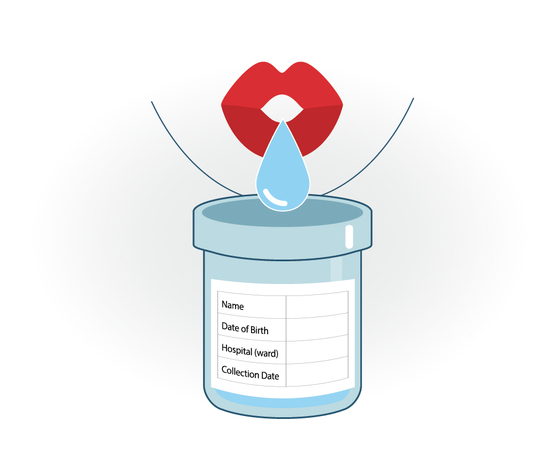![Real-time gene amplification (RT-PCR) sample collection method using saliva (saliva) presented by Seegen. There is no significant difference in accuracy compared to the method of collecting a sample by inserting a cotton swab deep into the nose. [그래픽=씨젠]](https://i0.wp.com/pds.joins.com/news/component/htmlphoto_mmdata/202101/07/2a6960cc-b18f-4e32-817f-3e8047f7410b.jpg?w=560&ssl=1)
Real-time gene amplification (RT-PCR) sample collection method using saliva (saliva) presented by Seegen. There is no significant difference in accuracy compared to the method of collecting a sample by inserting a cotton swab deep into the nose. [그래픽=씨젠]
There is a way to accurately test for a novel coronavirus infection (Corona 19) without sticking a cotton swab into the nose and spitting out.
Seegene, a molecular diagnostic company, announced on the 7th that it has obtained European in vitro diagnostic reagent certification (CE-IVD) for applying the saliva (saliva) test method to its two types of real-time gene amplification (RT-PCR) kits for Corona 19 diagnosis. . This product diagnoses 4 types of Corona 19 genes with a single test (Allplex Sars-Cove 2 Assay) and one that can diagnose not only Corona 19, but also flu and cold with a single test (Allplex Sars- Cove 2/FluA/FluB/RSV Assay).
Europe (EU) is the first to use Seegene’s saliva test method. According to Seegene, the RT-PCR test method using the saliva collection method has little difference in test accuracy compared to the conventional RT-PCR method called’nasopharyngeal smear’. Korea is currently only introducing such a saliva-based RT-PCR test method to social welfare facilities without or lacking medical personnel. Otherwise, you must have an examination by a medical professional.
Si-won Noh, managing director of Seegene’s strategic planning, said, “Considering the European situation in which samples are difficult to process due to the rapidly increasing test volume due to the second coronavirus pandemic, many samples can be collected within a short time, regardless of location or manpower. The saliva test method is expected to help with large-scale diagnosis and effective quarantine.”
The conventional method for collecting samples for RT-PCR testing is to scrape the mucous membrane located deep in the nose with a cotton swab, so only qualified medical personnel can do it. Even those who undergo examination often complain of discomfort due to the method of taking the sample. In addition, the person being tested may sneeze in the process of getting the cotton swab into the nose, and there is a risk that the tester will be infected with the Corona 19 virus during this process. For this reason, it is necessary to replace gloves, masks, protective clothing, etc. worn by the examiner to prevent direct infection or secondary infection through quarantine equipment.
On the other hand, in the case of the saliva (saliva) test method, the test subject spit on a plastic tube by itself to collect a sample. Unlike conventional methods that require educated and qualified medical personnel, anyone can easily collect samples.
“I know that the health authorities are also taking the direction of expanding the method of testing for Corona 19 if the efficacy is verified,” said Oh Oh-hwan, executive director of the Korea Bio Association.
Joonho Choi, Journalist of Science and the Future [email protected]
